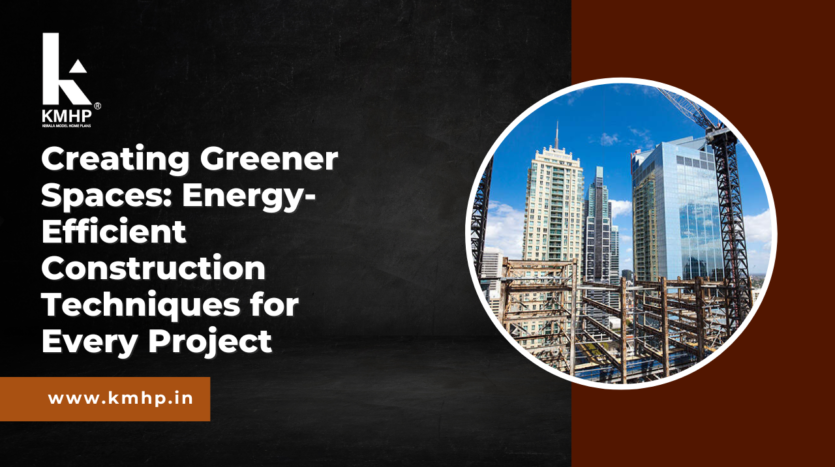In an era marked by growing environmental awareness, the construction industry is undergoing a transformative shift towards greener and more sustainable practices. Energy-efficient construction techniques are at the forefront of this movement, offering a pathway to reduce carbon emissions, minimize energy consumption, and create healthier and more comfortable spaces for occupants. From passive design strategies to innovative technologies, there are a myriad of approaches that can be employed to make every construction project more energy-efficient. Let’s explore some of these techniques and how they can be integrated into construction projects to create greener spaces for the future.
Passive Design Principles: Harnessing Natural Elements
Passive design principles capitalize on the natural elements such as sunlight, airflow, and thermal mass to regulate indoor temperatures and reduce the need for mechanical heating and cooling systems. Techniques such as orientation optimization, shading devices, and high-performance insulation help maximize energy efficiency while enhancing occupant comfort. By incorporating passive design strategies from the initial stages of project planning, buildings can significantly reduce their energy demand and carbon footprint over their lifetime.
High-Performance Building Envelopes: Sealing in Efficiency
A high-performance building envelope is essential for minimizing heat loss and air leakage, thereby improving energy efficiency and indoor comfort. Utilizing advanced insulation materials, air barriers, and efficient fenestration systems can significantly enhance the thermal performance of a building. By sealing gaps and preventing heat transfer, high-performance building envelopes help maintain stable indoor temperatures and reduce reliance on mechanical heating and cooling systems, leading to long-term energy savings and environmental benefits.
Energy-Efficient HVAC Systems: Optimizing Comfort and Efficiency
Heating, ventilation, and air conditioning (HVAC) systems are significant contributors to energy consumption in buildings. Employing energy-efficient HVAC systems, such as variable refrigerant flow (VRF) systems, heat pumps, and energy recovery ventilation (ERV) systems, can drastically reduce energy usage while maintaining optimal indoor comfort levels. Additionally, integrating smart controls and building automation systems allows for precise control and monitoring of HVAC operations, further optimizing energy efficiency and reducing operational costs.
Renewable Energy Integration: Powering the Future Sustainably
Incorporating renewable energy sources, such as solar photovoltaic (PV) panels, wind turbines, and geothermal heat pumps, into construction projects can offset energy consumption and reduce reliance on fossil fuels. By generating clean and renewable energy onsite, buildings can become self-sufficient and even contribute excess energy back to the grid, thereby promoting sustainability and resilience in the built environment. Additionally, advancements in energy storage technologies, such as battery systems, enable efficient utilization of renewable energy and provide backup power during grid outages.
Lifecycle Assessment and Optimization: Ensuring Long-Term Sustainability
Beyond the construction phase, considering the lifecycle environmental impacts of building materials and systems is essential for achieving long-term sustainability goals. Conducting lifecycle assessments (LCAs) allows project teams to evaluate the environmental footprint of construction materials, from extraction and manufacturing to disposal or recycling. By selecting low-impact materials, optimizing construction processes, and prioritizing durability and recyclability, buildings can minimize their environmental footprint and contribute to a circular economy.
Conclusion: Building a Sustainable Future, One Project at a Time
In conclusion, energy-efficient construction techniques offer a pathway to create greener and more sustainable spaces for the future. By harnessing natural elements, optimizing building envelopes, deploying energy-efficient HVAC systems, integrating renewable energy sources, and considering lifecycle impacts, construction projects can significantly reduce their environmental footprint while enhancing occupant comfort and well-being. As the construction industry continues to evolve, embracing energy-efficient practices is essential for building a sustainable future, one project at a time.
- Exploring the Risks of Betting Utan Licens: A Comprehensive Guide - June 29, 2025
- Plinko Sverige عروض نت - June 29, 2025
- 179036011751162555 - June 29, 2025

